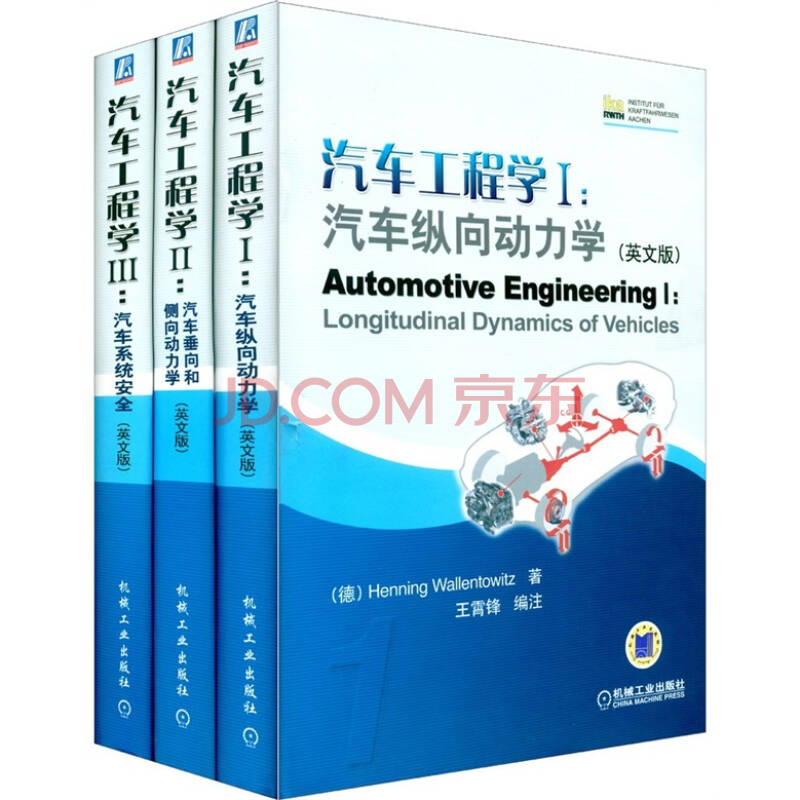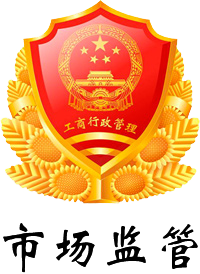

商品数量
377
内容简介
《汽车工程学(全套共3册)(英文版)》主要介绍:汽车的行驶性能和制动性能,即汽车的直线行驶性能。《汽车工程学(全套共3册)(英文版)》内容主要包括:交通系统与汽车,汽车经济方面的问题,车轮阻力,空气动力阻力,爬坡阻力,加速阻力,汽车发动机,电驱动,混合动力,离合器,变速器,差速器,制动器,制动传动系统,传动系振动,车辆的驱动性能,车辆的燃油消耗,传动系布置,驱动极限,摩擦限制的制动能力,制动力分配,制动力控制和制动力调节。
该书内容比较新,较为全面地介绍了与汽车直线行驶性能相关的结构、技术和理论,视角比较独特,除用于高等学校车辆工程专业的双语教学外,还可以作为汽车工程师的参考书。
该书内容比较新,较为全面地介绍了与汽车直线行驶性能相关的结构、技术和理论,视角比较独特,除用于高等学校车辆工程专业的双语教学外,还可以作为汽车工程师的参考书。
作者简介
亨宁·瓦伦托维兹,大学教授,工学博士,简历:生于1943年7月16日,1964~1969年:在布伦瑞克大学学习机械工程与汽车工程专业,1970~1977年:在布伦瑞克大学汽车工程研究所担任科研助理,1978~1985年:实习生,技术主管,戴姆勒一奔驰轿车实验部部门负责人,1985~1992年:宝马汽车公司现代底盘开发总工程师,1992~1993年:宝马技术有限责任公司董事、总经理,1993~2008年亚琛工业大学教授,汽车研究所主任,1999~2002年:亚琛工业大学副校长,2003年至今:采埃孚集团监事会成员,同济大学名誉教授,期间曾任:大众汽车科学委员会成员,清华大学名誉教授,大众汽车科学和技术学院院长,里卡多德国公司管理委员会委员,2007年至今:欧宝公司监事会成员,2008年至今:韩国启明大学“智能车辆和运输”研究生院院长。
目录
Preface
Foreword
1 IntrOductiOn
1.1 Traffic system motor vehicle
1.1.1 Means of transportation
1.1.2 Energy demand
1.1.3 Influence on the environment
1.2 Economic aspects of the motor vehicle
1.2.1 Economic significance
1.2.2 Costs of a motor vehicle Notes
2 Power and Energy Demand
2.1 Wheel resistance
2.1.1 Component from the tire
2.1.2 Component from the road
2.1.3 Component resulting from slip
2.1.4 Summary of wheel resistance Components
2 2 Aerodynamic drag
2.2.1 Basics of aerodynamics
2.2.2 Components of aerodynamic drag
2 3 Resistance due to gradients
2.4 Acceleration resistance
2.4.1 Translational component
2.4.2 Rotational component
2.4.3 Summary of acceleration components
2.5 0verall resistance Notes
3 Powertrain
3.1 Energy accumulators
3.2 Propulsion units(engines)
3.2.1 Spark-ignition(otto)engine
3.2.2 Compression ignition(diesel) engine
3.2.3 Wankel engine
3.2.4 Gas turbine
3.2.5 Electric drives
3.2.6 Hybrid propulsion
3.2.7 Comparison of propulsion units
3.3 Speed converters(clutches)
3.3.1 Mechanical clutch
3.3.2 Hydrodynamic clutch
3.3.3 Visco-Hydraulic clutch
3.4 Torque converters(transmission)
3.4.1 Mechanical stepped transmissions
3.4.2 Mechanical continuously variable transmissions
3.4.3 Hydraulic continuously variable transmissions
3.4.4 Automatic transmissions(AT)
3.4.5 Comparison of transmissions
3.5 Differential(transfer gearbox)
3.5.1 Bevel-gear differentials
3.5.2 Spur-gear planetary differential
3.5.3 Differential locks
3.6 Brakes
3.6.1 Legal regulations
3.6.2 Wheel brakes
3.6.3 Braking circuit layout
3.6.4 Hydraulic brakes
3.6.5 Air brake systems
3.6.6 Hybrid braking systems
3.6.7 Electric brake systems
3.6.8 Continuous service brakes Notes
4 Vehicle Dynamics
4 1 Driving performance
4.1.1 Power balance
4.1.2 Power-defined climbing ability
4.1.3 Power-defined accelerating ability
4.1.4 Influence of transmission layout
4.1.5 Total braking force and braking potential
4 2 Fuel consumption
4.2.1 Determination of fuel consumption
4.2.2 Fuel consumption norms
4.2.3 Fuel-consumption limits
4.2.4 Reduction in fuel consumption
4 3 Drivetrain layouts
4.3.1 Rear-wheel drive
4.3.2 Front-wheel drive
4.3.3 A11-wheel drive
4.4 Driving limits
4.4.1 Vertical forces
4.4.2 Horizontal forces
4.4.3 Friction loads
4.4.4 Friction induced accelerating and climbing ability
4.4.5 Traction eoefficient and legal regulations
4.4.6 Braking capacity limited by friction
4.4.7 Brake-foree distribution Notes Resume of Prof. Henning Wallentowitz
Foreword
1 IntrOductiOn
1.1 Traffic system motor vehicle
1.1.1 Means of transportation
1.1.2 Energy demand
1.1.3 Influence on the environment
1.2 Economic aspects of the motor vehicle
1.2.1 Economic significance
1.2.2 Costs of a motor vehicle Notes
2 Power and Energy Demand
2.1 Wheel resistance
2.1.1 Component from the tire
2.1.2 Component from the road
2.1.3 Component resulting from slip
2.1.4 Summary of wheel resistance Components
2 2 Aerodynamic drag
2.2.1 Basics of aerodynamics
2.2.2 Components of aerodynamic drag
2 3 Resistance due to gradients
2.4 Acceleration resistance
2.4.1 Translational component
2.4.2 Rotational component
2.4.3 Summary of acceleration components
2.5 0verall resistance Notes
3 Powertrain
3.1 Energy accumulators
3.2 Propulsion units(engines)
3.2.1 Spark-ignition(otto)engine
3.2.2 Compression ignition(diesel) engine
3.2.3 Wankel engine
3.2.4 Gas turbine
3.2.5 Electric drives
3.2.6 Hybrid propulsion
3.2.7 Comparison of propulsion units
3.3 Speed converters(clutches)
3.3.1 Mechanical clutch
3.3.2 Hydrodynamic clutch
3.3.3 Visco-Hydraulic clutch
3.4 Torque converters(transmission)
3.4.1 Mechanical stepped transmissions
3.4.2 Mechanical continuously variable transmissions
3.4.3 Hydraulic continuously variable transmissions
3.4.4 Automatic transmissions(AT)
3.4.5 Comparison of transmissions
3.5 Differential(transfer gearbox)
3.5.1 Bevel-gear differentials
3.5.2 Spur-gear planetary differential
3.5.3 Differential locks
3.6 Brakes
3.6.1 Legal regulations
3.6.2 Wheel brakes
3.6.3 Braking circuit layout
3.6.4 Hydraulic brakes
3.6.5 Air brake systems
3.6.6 Hybrid braking systems
3.6.7 Electric brake systems
3.6.8 Continuous service brakes Notes
4 Vehicle Dynamics
4 1 Driving performance
4.1.1 Power balance
4.1.2 Power-defined climbing ability
4.1.3 Power-defined accelerating ability
4.1.4 Influence of transmission layout
4.1.5 Total braking force and braking potential
4 2 Fuel consumption
4.2.1 Determination of fuel consumption
4.2.2 Fuel consumption norms
4.2.3 Fuel-consumption limits
4.2.4 Reduction in fuel consumption
4 3 Drivetrain layouts
4.3.1 Rear-wheel drive
4.3.2 Front-wheel drive
4.3.3 A11-wheel drive
4.4 Driving limits
4.4.1 Vertical forces
4.4.2 Horizontal forces
4.4.3 Friction loads
4.4.4 Friction induced accelerating and climbing ability
4.4.5 Traction eoefficient and legal regulations
4.4.6 Braking capacity limited by friction
4.4.7 Brake-foree distribution Notes Resume of Prof. Henning Wallentowitz
暂无评论

